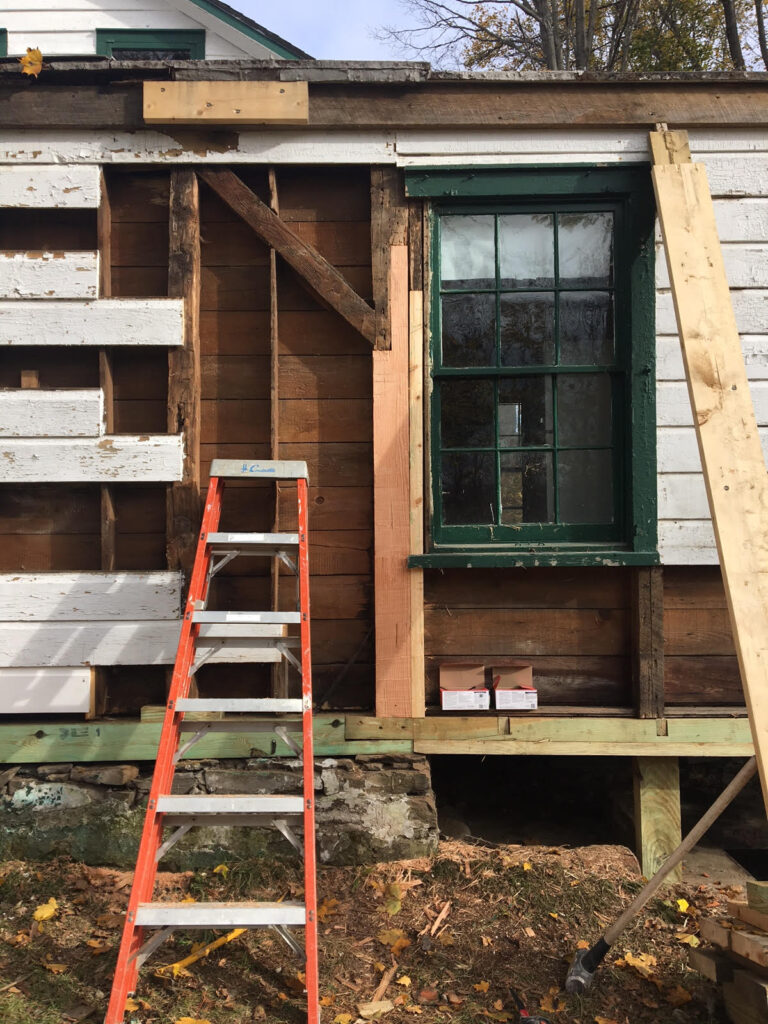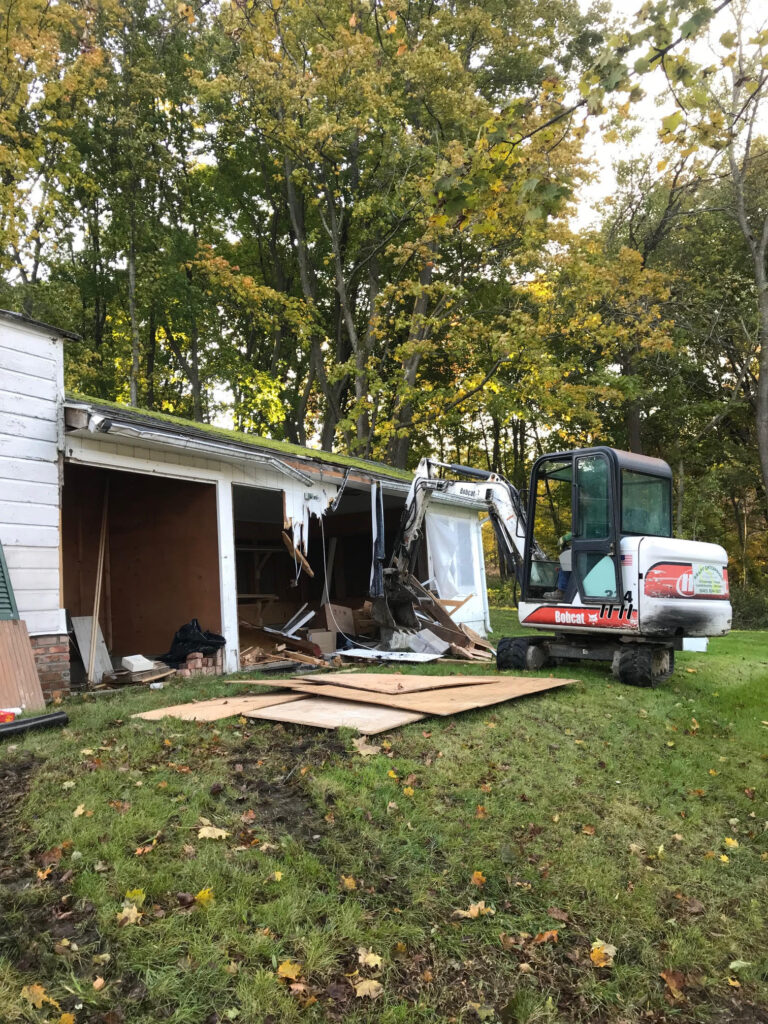Get comfortable – this is a long post. The precarious state of the earth has been on my mind a lot lately. Maybe it’s because we have a 7-year-old son and scientists’ projections for his future are pretty grim. Maybe it’s because, as a real estate broker, I drive way more now than I ever have in my life. Maybe it’s because I see the bins full of plastic bottles and other refuse that need to be carted to the waste transfer station when At Home guests leave our house after their stays. And I can’t help but bemoan the Dumpsters of construction debris that fill up from Worth Preserving house rehabilitation projects – even though the way we practice historic preservation is, by nature, more conservative than wholesale demolition and new construction.
I can emote and hand-wring with the best of them. But generally I’m a person of action. So I vowed to make 2020 the year I double down on sustainability, both in my home and professional lives.
In Town
Fortunately, Germantown has a clear sustainability streak going. There’s the afore-mentioned transfer station that offers single-stream recycling (better than nothing), and our municipal parking lot even has an electric vehicle charging station! A weekly farmers market began operations last summer. Otto’s Market, Lawlor’s Package Store (wine & spirits), Athabold Flowers, Germantown Laundromat (solar and wind powered, with a shop full of eco-friendly household supplies) and other downtown businesses provide necessary provisions within walking distance of our At Home rental properties and short driving (okay, I could bike it if I had to) distance from where we live.
Otto’s and the Laundromat deserve special credit for really upping the “green” game in Germantown. I think they’ve been subliminally inspiring me in recent months as they continue to roll out protocols such as a bring-your-own-bag discount, a coffee club with reusable mugs, providing real dishes and metal cutlery in the deli, and clearly marking waste bins as “Compost”, “Recycle”, and “Landfill”. These practices gently steer public conscience and reinforce good habits among everyone who walks in the door.
At Work
My work involves a lot of daily to-ing and fro-ing. As much as I try to streamline my trips (to house showings, rental properties, job sites, the hardware store), I still find myself on the road more than I would like. I am also painfully aware that construction involves big trucks, heavy machinery, and materials of various levels of toxicity.

Replacing rotted siding 
Removing a 1980s screened porch addition
Recognition is a first step.
I strongly believe that historic preservation is a more conscientious development approach than new construction. For one thing, there’s embodied energy – the total amount of energy needed to manufacture, transport, and use a material or product. Old buildings have tons of embodied energy. In fact, it’s frustrating to have to strip away some of that energy in the form of aluminum siding, decades-old carpet, and “improvements” such as vinyl (a.k.a., “poison plastic”) windows that fail within the lifetime of many household pets. We preserve from the landfill what’s worth preserving – original framing, floors, doors, windows, hardware, fixtures, etc. – and likely to last for many years (or centuries) to come.
Introducing new materials to old houses is inevitable. And old buildings can rise to the task of improved energy efficiency. At the beginning of our current ca.-1800 house rehab project, we commissioned an energy audit to make sure we took advantage of every opportunity to introduce “green” features. One way to define sustainability is “meeting the needs of the present without compromising the ability of future generations to meet their own needs” (World Commission on Environment and Development, 1987). Similarly, a way to think about preservation is making buildings function in the present (and for the future) without sacrificing their character. To that end, Worth Preserving projects hew closely to the Secretary of the Interior Standards for Historic Rehabilitation.
In the overlapping interest of both sustainability and preservation, this year I’m renewing my pledge to educate myself as thoroughly as I can on energy-conscious maintenance and materials that will have the robust lifespan and joyful design that so much old stuff has.
Here are some resources I’ve been studying:
https://www.nps.gov/tps/how-to-preserve/briefs/3-improve-energy-efficiency.htm
https://www.epa.gov/smm/sustainable-management-construction-and-demolition-materials
“Sustainability and Historic Windows: How Federal Policies and Green Marketing Conspire To Sell Window Replacement and What Can Be Done About It”
National Trust for Historic Preservation Research & Policy Lab
National Trust for Historic Preservation “Best Practices for the Care of Structures and Landscapes”
At Home

Seed pod holiday ornament made by Quittner Antiques
One of the things we liked best about the first Germantown house we rehabbed was its proximity to “downtown” Germantown, which at that time (2009) consisted of Lawlor’s, previous incarnations of the laundromat and flower store…and the newly opened Otto’s. Since then, Main Street has flourished, thanks to community-minded businesses like The Central House (the old town hotel, reborn in 2011) and Quittner Antiques (they can repair, refurbish, recycle, and upcycle anything, even invasive species seed pods from the Hudson River!).
Since our goal was to restore our house to new life as a contributing asset to the community, offering it for short-term stays so that visitors could truly feel “at home” in Germantown, walkability was and remains important to us. Guests come for all kinds of reasons – vacation, weddings, family reunions, birthdays, work retreats, knitting sessions – so, like me, they do a lot of to-ing and fro-ing. But it’s also entirely possible to spend perfectly happy days without a car, strolling to town, having lunch or dinner, taking Fido to the dog park and kids to the playground, watching birds and butterflies in the conservancy area. An easy bike ride takes you to the Hudson River or Clermont Historic Site. We provide a list of local attractions – small businesses, historic places, recreation areas – so that when people do venture out by car, they explore wisely.
Some efforts we’ve made to reduce waste At Home:
- Our kitchens are fulling stocked for cooking at home, and we welcome guests to use our silver cutlery, china dishes, ceramic mugs, glass glasses and cloth napkins instead of throwaway paper plates/napkins and plastic cups/utensils
- We use local and low-waste products whenever possible, such as Who Gives a Crap toilet paper, 2Note soap, and Pact towels
- Our cleaning supplies are minimal – vinegar, Seventh Generation
- We provide reusable shopping bags, bins and instructions to encourage guests to recycle and compost
- We do not provide plastic wrap or baggies; instead we have reusable food storage containers
- The house has three heating zones, two of which are controlled by a Nest programmable thermostat, so that indoor temperatures can be monitored and adjusted appropriately
We still have miles to go. But Germantown is setting the bar, and we’re committed to doing our part. Here are some thoughts on what we can do in 2020:
- The exterior of the house is suddenly in desperate need of repainting, so we’re researching environmentally sensitive products that will hopefully last longer than the previous job
- Do we dare switch to LED light bulbs (so scared!) – I know it’s irrational, I just need to figure out the right color temperature and then say goodbye to incandescent
- Provide bicycles?
- Use drying racks and an outdoor clothes line instead of the dryer for sheets and towels?
- Join the Otto’s Coffee Club so that guests have real mugs instead of paper cups waiting for them at the market if they stop for a pick-me-up?
- Provide insulated water bottles for guests to take on walks, hikes, bike rides, etc.?
- Offer the house as meeting space for local non-profits committed to sustainability (in all its forms)?
Your ideas, please!